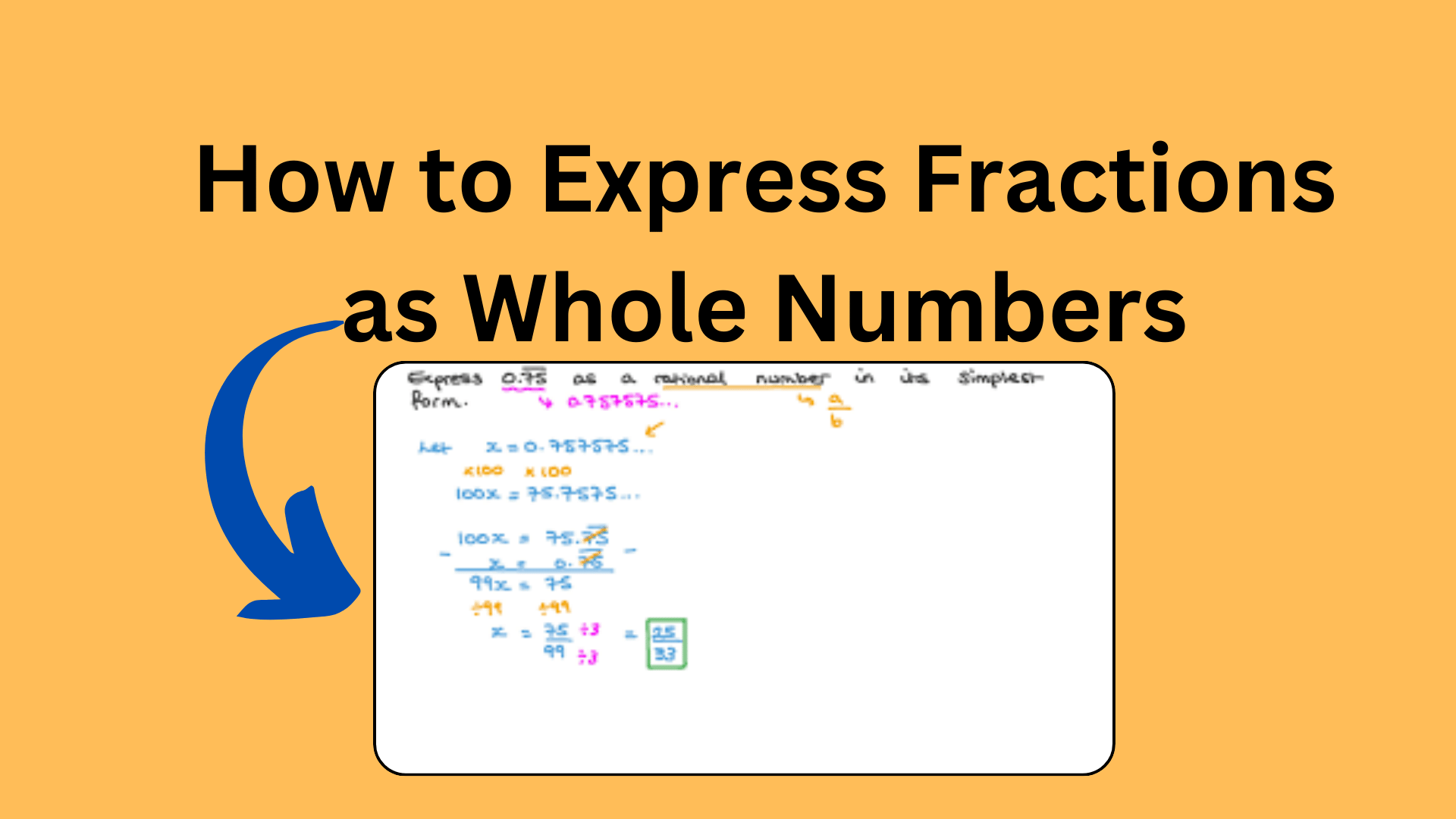
How to Express Fractions as Whole Numbers
Numerals and numbers are an integral part of the mathematical world and play a crucial role in various fields such as finance, science, and everyday life. The value of a number is determined by its digits, place value, and the base of the number system. In this article, we will delve into the world of numbers, with a focus on whole numbers and how to express fractions as whole numbers.
Understanding Numbers:
Before we dive into the specifics of whole numbers, let’s first understand the different types of numbers that exist in the mathematical realm. Numbers can be broadly categorized into the following types:
- Natural Numbers (N): Natural numbers are the positive counting numbers that start from 1 and go on to infinity. They do not include fractional or decimal values.
- Whole Numbers (W): Whole numbers are a subset of natural numbers that include zero and extend to infinity. Just like natural numbers, they do not include fractions or decimals.
- Integers (Z): Integers encompass all the positive counting numbers, zero, and negative counting numbers. They span from negative infinity to positive infinity and exclude fractions and decimals.
- Decimal Numbers: Decimal numbers consist of numeral values with a decimal point and can sometimes be expressed in fractional form.
- Real Numbers (R): Real numbers include all positive and negative integers, fractions, and decimal values. They do not include imaginary values.
- Complex Numbers (C): Complex numbers include real numbers and imaginary numbers and are represented in the form a+bi, where ‘a’ and ‘b’ are real numbers.
- Rational Numbers (Q): Rational numbers are those that can be expressed as the ratio of two integers and can be represented as fractions or decimals.
- Irrational Numbers (P): Irrational numbers cannot be expressed as fractions or ratios of integers and are typically represented in decimal form with endless non-repeating digits after the decimal point.
What Are Whole Numbers?
Whole numbers are a subset of natural numbers that include zero and extend to infinity. They are a collection of positive integers and are denoted by the symbol “W.” Whole numbers do not include fractions or decimals, making them a crucial part of the number system.
You Might Like This:
- How To Resolving “Container Runtime Not Running” Error
- How To Solving Error 48: Address Already in Use on Your Network
- How To Troubleshooting: “errno 2” – Resolving File and Directory Errors
- Python Syntax Error: How to Fix EOL While Scanning String Literal
Examples of Whole Numbers:
To understand whole numbers better, let’s look at some examples. Whole numbers include:
- 0
- 15
- 16
- 76
- 110
- and many more.
How to Express Fractions as Whole Numbers:
Now, let’s address the key topic of this article: how to express fractions as whole numbers. Fractions, such as 1/3, are not whole numbers because they are in fractional form. Whole numbers are those that start from zero and are typically expressed as 0, 1, 2, and so on.
Let’s take the example of 1/3 and see how it can be expressed as a whole number:
1/3 as a Whole Number:
The fraction 1/3 can also be represented as 0.33. However, it’s important to note that 1/3 is not a whole number because it is in fractional form and whole numbers do not include fractions or decimals.
To express 1/3 as a whole number, you have two options:
- Rounding Up: If you round 0.33 up to the nearest whole number, you get 1.
- Rounding Down: If you round 0.33 down to the nearest whole number, you get 0.
Since the digit after the decimal is less than 5, it will be rounded down to 0. Therefore, 1/3 as a whole number is 0.
Similar Questions:
- What is 15/10 as a Whole Number? The number 15/10 can be expressed as 1.5 in decimal form. To round it to the nearest whole number, we get 2.
- What is 13/4 as a Whole Number? The number 13/4 can be expressed as 3.25 in decimal form. Rounding it to the nearest whole number, we get 3.
- What is 95/5 as a Whole Number? The number 95/5 is 19 when expressed as a whole number.
Conclusion:
Understanding numbers, their types, and the concept of whole numbers is essential in mathematics. Whole numbers, a subset of natural numbers, are crucial for counting and basic calculations. When dealing with fractions, it’s important to know how to express them as whole numbers through rounding. This knowledge can be beneficial in various mathematical and real-world applications. If you’re interested in expanding your mathematical skills further, consider exploring online courses and resources to enhance your knowledge.

